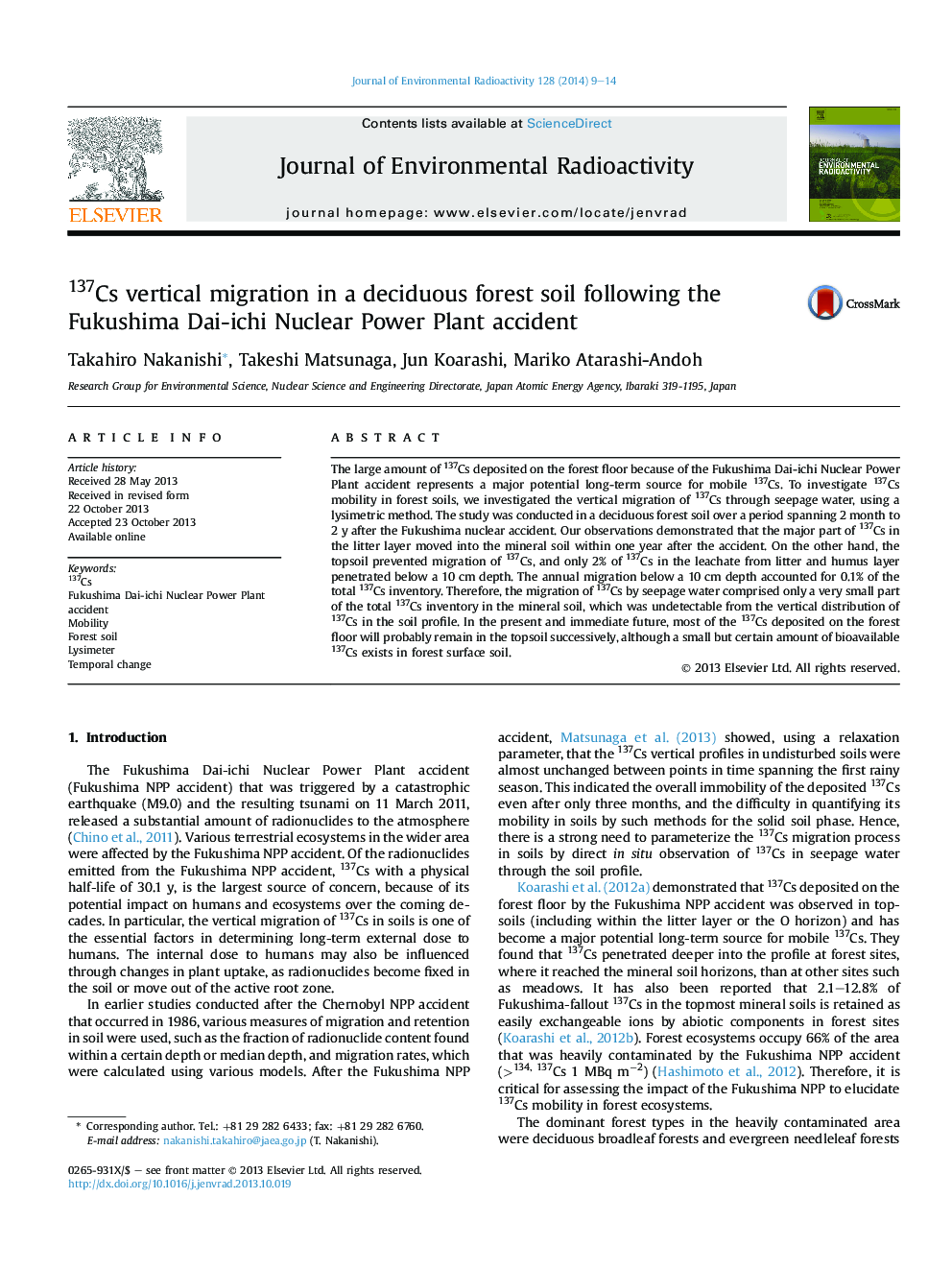| Article ID | Journal | Published Year | Pages | File Type |
|---|---|---|---|---|
| 8083127 | Journal of Environmental Radioactivity | 2014 | 6 Pages |
Abstract
The large amount of 137Cs deposited on the forest floor because of the Fukushima Dai-ichi Nuclear Power Plant accident represents a major potential long-term source for mobile 137Cs. To investigate 137Cs mobility in forest soils, we investigated the vertical migration of 137Cs through seepage water, using a lysimetric method. The study was conducted in a deciduous forest soil over a period spanning 2 month to 2Â y after the Fukushima nuclear accident. Our observations demonstrated that the major part of 137Cs in the litter layer moved into the mineral soil within one year after the accident. On the other hand, the topsoil prevented migration of 137Cs, and only 2% of 137Cs in the leachate from litter and humus layer penetrated below a 10Â cm depth. The annual migration below a 10Â cm depth accounted for 0.1% of the total 137Cs inventory. Therefore, the migration of 137Cs by seepage water comprised only a very small part of the total 137Cs inventory in the mineral soil, which was undetectable from the vertical distribution of 137Cs in the soil profile. In the present and immediate future, most of the 137Cs deposited on the forest floor will probably remain in the topsoil successively, although a small but certain amount of bioavailable 137Cs exists in forest surface soil.
Keywords
Related Topics
Physical Sciences and Engineering
Energy
Nuclear Energy and Engineering
Authors
Takahiro Nakanishi, Takeshi Matsunaga, Jun Koarashi, Mariko Atarashi-Andoh,
